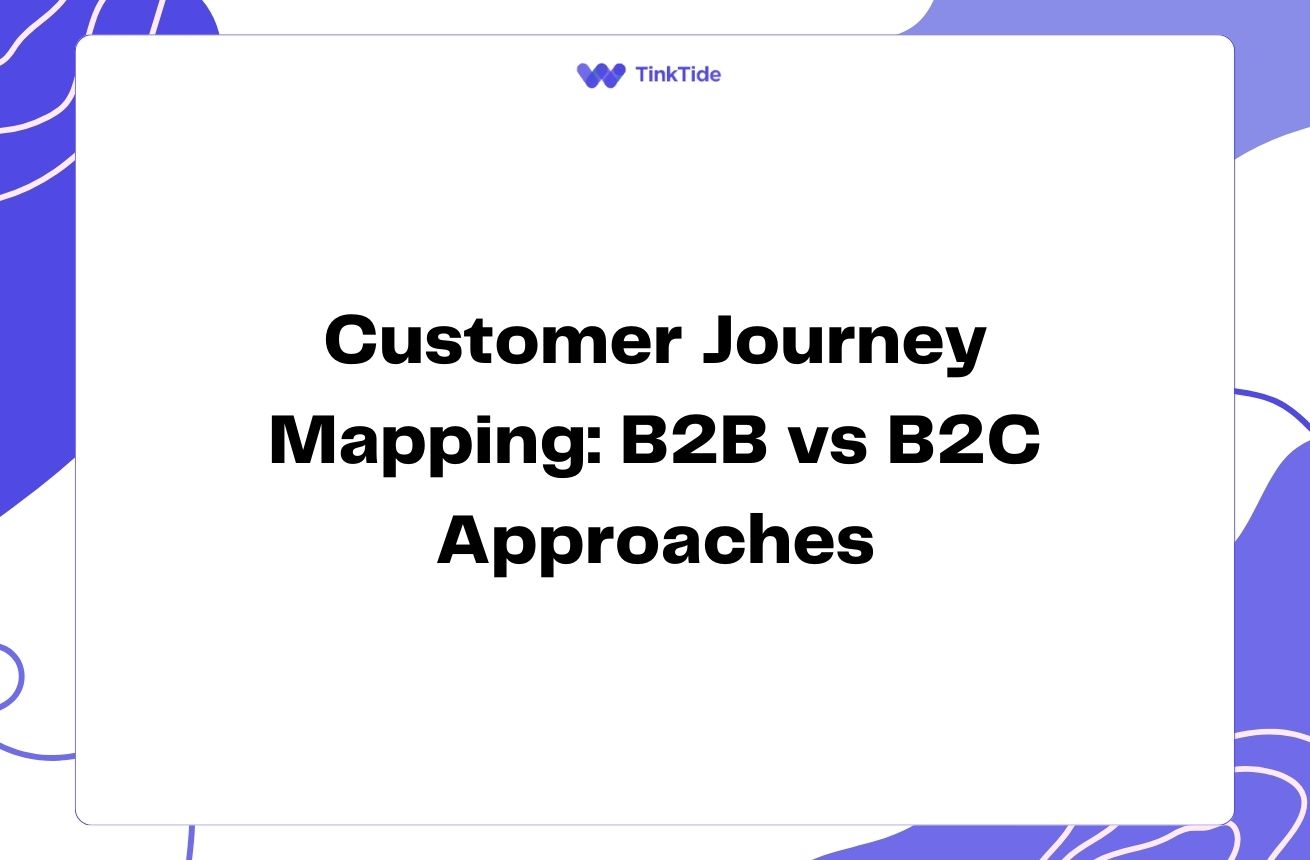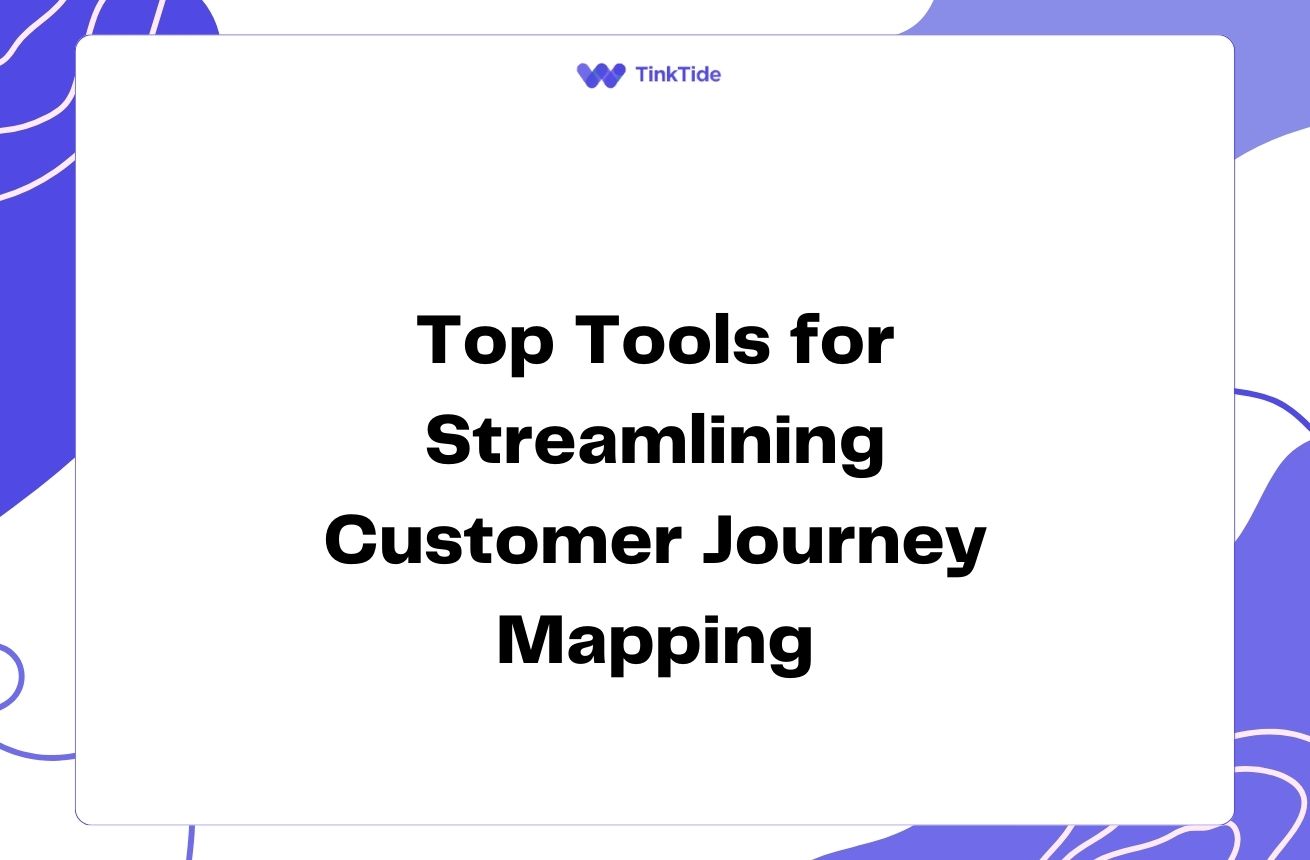Customer Journey Mapping for Startups: A Beginner's Guide
Understanding Customer Journey Mapping
Customer journey mapping is a powerful tool that helps startups visualize and understand the experiences their customers have with their product or service. It's a visual representation of every interaction a customer has with your brand, from initial awareness to post-purchase support.
For startups, implementing customer journey mapping can be a game-changer. It allows you to identify pain points, optimize touchpoints, and create a more seamless experience for your users. This, in turn, can lead to increased customer satisfaction, loyalty, and ultimately, business growth.
According to a study by McKinsey, companies that prioritize the customer journey see revenues increase by 10-15% while also lowering the cost to serve by 15-20%.
Benefits of Customer Journey Mapping for Startups
Implementing customer journey mapping in your startup environment can yield numerous benefits:
- Improved customer understanding: Gain deep insights into your customers' needs, motivations, and pain points.
- Enhanced user experience: Identify and address friction points in your product or service.
- Increased customer retention: Create more personalized and satisfying experiences that keep customers coming back.
- Informed decision-making: Use data-driven insights to guide product development and marketing strategies.
- Cross-functional alignment: Unite different teams around a common understanding of the customer experience.
Getting Started with Customer Journey Mapping
To begin implementing customer journey mapping in your startup, follow these steps:
1. Define your customer personas: Create detailed profiles of your target customers, including their demographics, goals, and challenges. Tools like Xtensio's User Persona Template can help you get started.
2. Identify key touchpoints: List all the interactions a customer has with your brand, from discovering your product to making a purchase and beyond.
3. Gather data: Collect information about customer behavior and experiences through surveys, interviews, analytics, and customer support interactions.
4. Map the journey: Create a visual representation of the customer journey, including touchpoints, emotions, and actions at each stage.
Tools for Customer Journey Mapping
Several tools can help startups create effective customer journey maps:
1. Miro: A collaborative online whiteboard with pre-built customer journey map templates.
2. Lucidchart: A diagramming tool that offers customizable customer journey map templates.
3. Smaply: A specialized customer experience mapping tool with features tailored for journey mapping.
Choose a tool that fits your startup's needs and budget, keeping in mind that even a simple spreadsheet can be effective for your first journey map.
Analyzing and Optimizing the Customer Journey
Once you've created your customer journey map, it's time to analyze and optimize:
1. Identify pain points: Look for areas where customers experience frustration or difficulty.
2. Spot opportunities: Find moments where you can exceed customer expectations or add value.
3. Prioritize improvements: Focus on changes that will have the biggest impact on customer satisfaction and business goals.
4. Implement and iterate: Make changes based on your findings and continuously gather feedback to refine the journey.
Common Challenges and How to Overcome Them
Startups often face unique challenges when implementing customer journey mapping:
- Limited resources: Focus on creating a simple, actionable journey map to start. You can always expand it later.
- Lack of data: Begin with qualitative insights from customer interviews and gradually incorporate quantitative data as you grow.
- Rapidly changing product: Embrace the iterative nature of startups and update your journey map regularly to reflect product changes.
- Cross-functional buy-in: Involve team members from different departments in the mapping process to ensure widespread adoption.
Measuring the Impact of Customer Journey Mapping
To ensure your customer journey mapping efforts are paying off, track these key metrics:
1. Customer Satisfaction Score (CSAT): Measure how satisfied customers are at different touchpoints.
2. Net Promoter Score (NPS): Gauge customer loyalty and likelihood to recommend your product.
3. Customer Retention Rate: Track how many customers continue to use your product over time.
4. Conversion Rate: Monitor how effectively you're moving customers through the journey to key actions or purchases.
Address common questions
Here are some frequently asked questions about customer journey mapping for startups:
How often should we update our customer journey map?
For startups, it's recommended to review and update your customer journey map every 3-6 months, or whenever significant changes occur in your product or market.
Can we create multiple journey maps for different customer segments?
Yes, creating separate journey maps for different customer personas or segments can provide more targeted insights and help tailor your approach to each group.
How can we involve customers in the journey mapping process?
Conduct customer interviews, surveys, and usability tests to gather direct feedback. You can also invite select customers to participate in journey mapping workshops.
What if we don't have enough data to create a comprehensive journey map?
Start with a hypothesis-based journey map using available data and team insights. Then, validate and refine it as you gather more customer data over time.
How can we ensure our journey map leads to actionable improvements?
Set clear goals for your journey mapping process, prioritize identified issues, and create a roadmap for implementing changes. Regularly review progress and measure the impact of improvements.
Provide additional resources
Nielsen Norman Group: Customer Journey Mapping 101
A comprehensive guide to customer journey mapping fundamentals
HubSpot: Free Customer Journey Map Templates
Downloadable templates to help you get started with journey mapping
Interaction Design Foundation: Customer Journey Maps - Walking a Mile in Your Customer's Shoes
An in-depth look at the customer journey mapping process
UserTesting: The Beginner's Guide to Customer Journey Mapping
A step-by-step guide to creating your first customer journey map
Salesforce: 7 Steps to Create a Customer Journey Map
A practical approach to customer journey mapping for businesses of all sizes
Summarize key takeaways
Customer journey mapping is a valuable tool for startups looking to improve their user experience and drive growth. By visualizing the entire customer experience, you can identify pain points, optimize touchpoints, and create more satisfying interactions with your brand.
Remember that journey mapping is an ongoing process. As your startup evolves, so too should your understanding of your customers' experiences. Regularly update your journey maps, involve cross-functional teams, and use data-driven insights to guide your decisions.
Start small, focus on actionable insights, and continuously iterate. With time and effort, customer journey mapping can become a powerful tool in your startup's arsenal, helping you create exceptional experiences that set you apart from the competition.
Ready to Transform Your Customer Experience?
Start mapping your customer journey today and unlock valuable insights for your startup.
Start Your Free Trial
